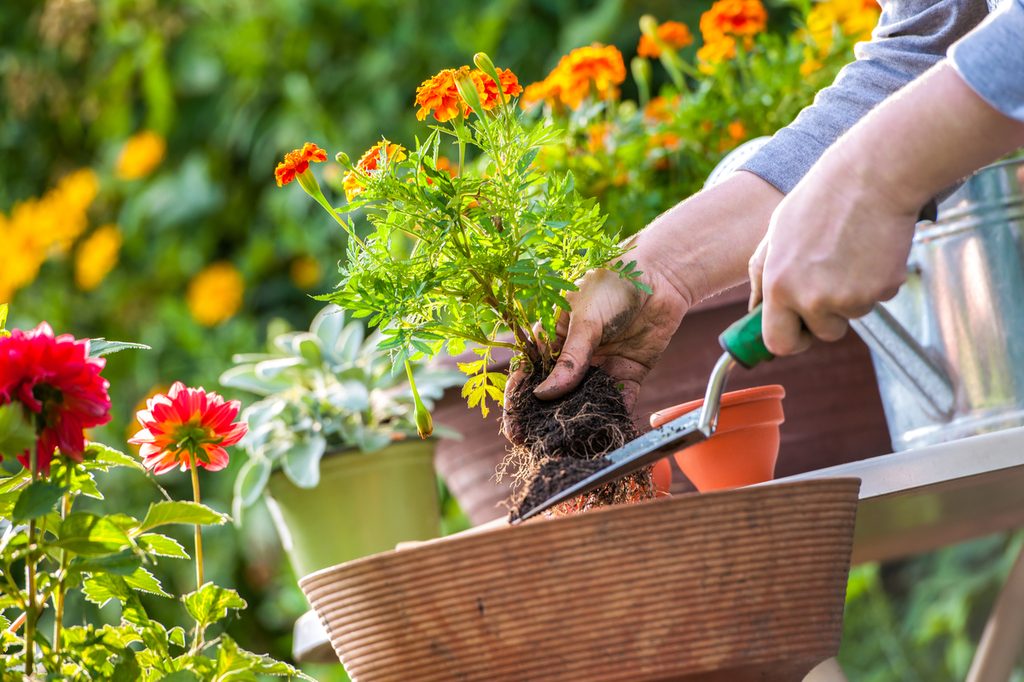
It seems like there’s always something more to be doing in the garden. Whether it’s the day-to-day chores like weeding or watering or the bigger, seasonal tasks like harvesting, there’s a task for every season and a season for every task. Figuring out which projects to do and when can be overwhelming, especially if you’re new to outdoor gardening. If you aren’t sure where to start or are looking for a handy checklist to ensure you’ve done everything, let this article be your guide! Here are six outdoor gardening projects and tasks to complete this October.
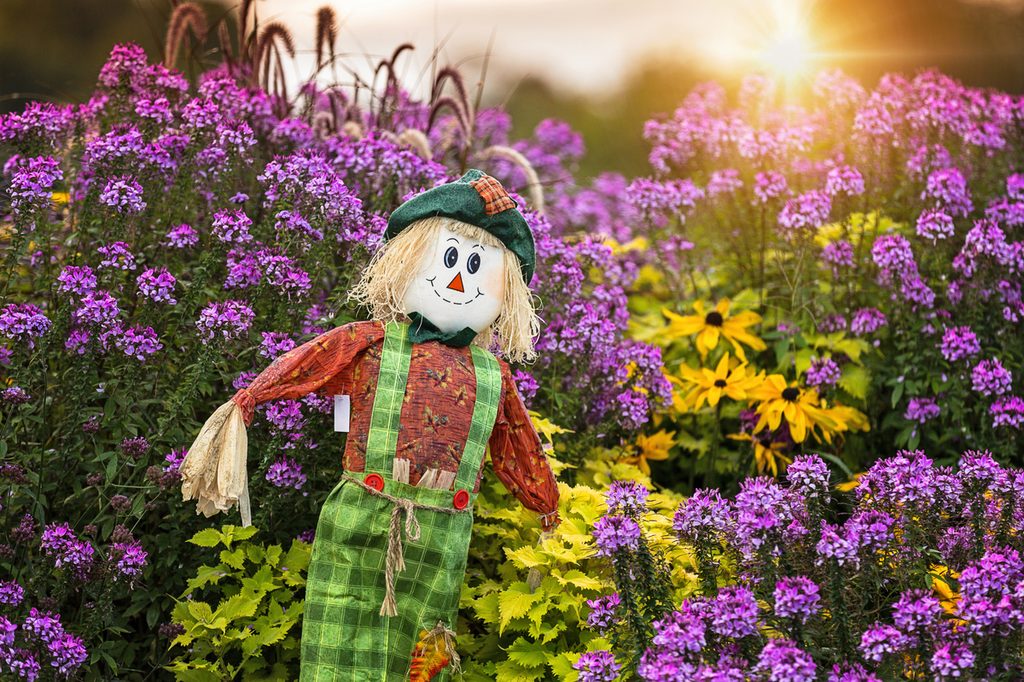
Set up feeders for birds and squirrels with leftover seeds
After you harvest the last of your fruits or flowers, you’ll need to clean out your garden. Any leftover plant material can be taken out and composted, unless it’s diseased or has a fungal infection. You may also want to save some of the seeds from your garden, especially if you’re growing heirloom plants.
However, if you don’t plan on using all the seeds from your garden or vegetables that are only partially edible (such as vegetables with insect damage), then you can set up a feeder for your local wildlife. Any empty and clean container can be used! All they need is a place for the birds to sit and a container for the seeds and vegetable bits. Empty bottles, hollowed out fruit rinds, even teacups and saucers can be used. Then—simply hang it in a tree.
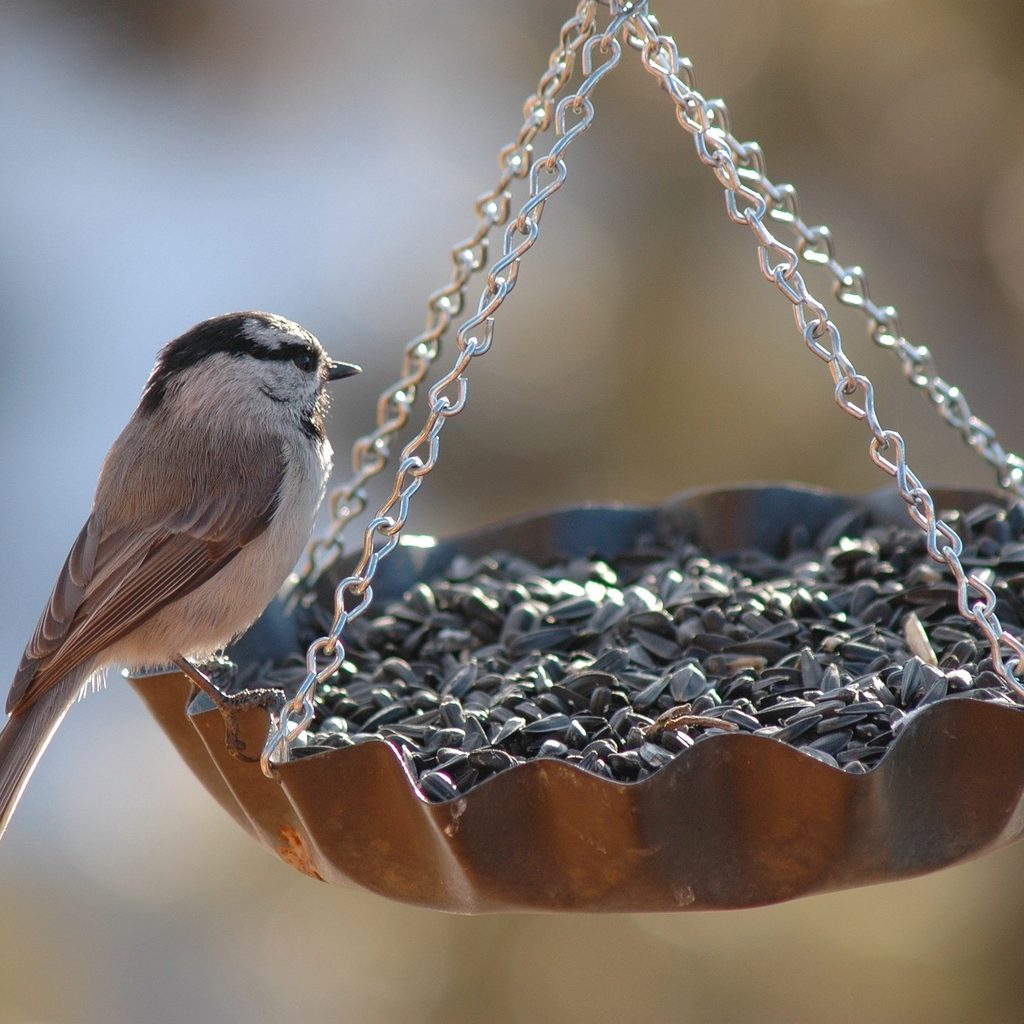
Plant your fall veggies or flowers
Once your garden has been cleaned out, it’s time to get planting. Many fall vegetables are best planted in August or September, but if you have a late frost or mild winters, then you’re still good to go. Low-lying leafy plants like cabbage, lettuce, and kale are all great choices. If you want a flower garden, consider planting mums or marigolds for a burst of fall color. You can even add some Halloween ambiance by planting Halloween pansies or black magic elephant ears.
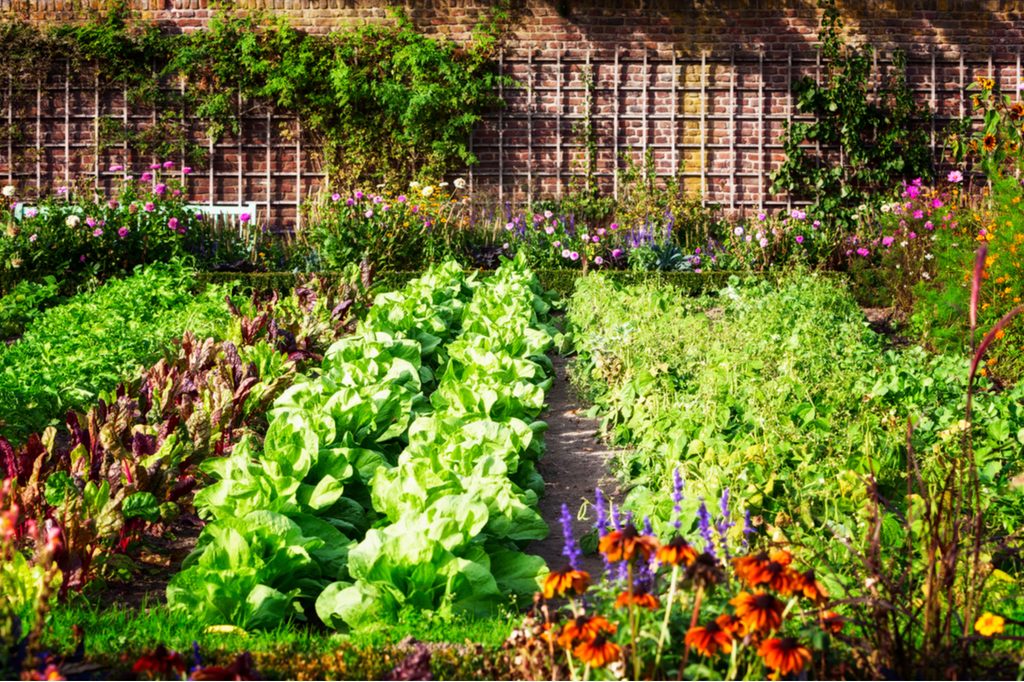
Turn crunchy October leaves into nutritious leaf mulch
Sometimes a problem can be turned into a solution, and that’s certainly the case for fall leaves. Fallen leaves can keep your grass from getting the light it needs, and they can become a slipping hazard, especially after rain. However, they can also be turned into leaf mulch, which keeps your garden warm and nourished through winter. All you need to do is gather all the leaves, cut or shred them into smaller pieces, and wait. Composting the leaf bits will help them decompose faster, but you can also just leave them in a pile. Many lawn mowers come with a mulching attachment that’s helpful for this.
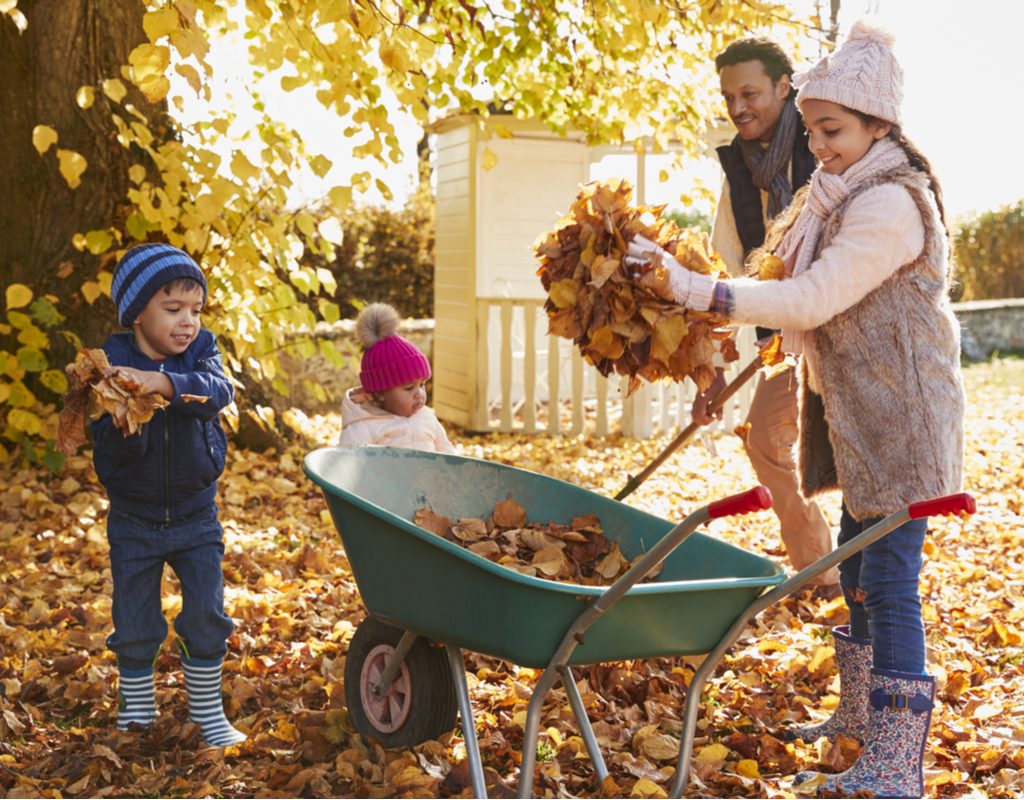
Make your outdoor sitting area cozy for fall
Sitting out in the garden, relaxing with some friends or a good book, is something many gardeners enjoy. However, if you want to keep the relaxation going through October, you’ll need to make sure your sitting area can withstand the cold. Wooden furniture that isn’t properly sealed can absorb water, as can fabric cushions, while metal furniture becomes uncomfortably cold during winter.
Laying a tarp over your furniture while it’s not in use can help protect it from the elements. You may want to get a few blankets that can be used outdoors. You can store them in a watertight container in your sitting area so they’re always on hand.
A fire pit can help you keep warm, too. You can get one professionally installed, or make your own. If you want to build your own fire pit, do so in early October, before frost hardens the ground, and make sure you have plenty of stones on hand to encircle the pit.
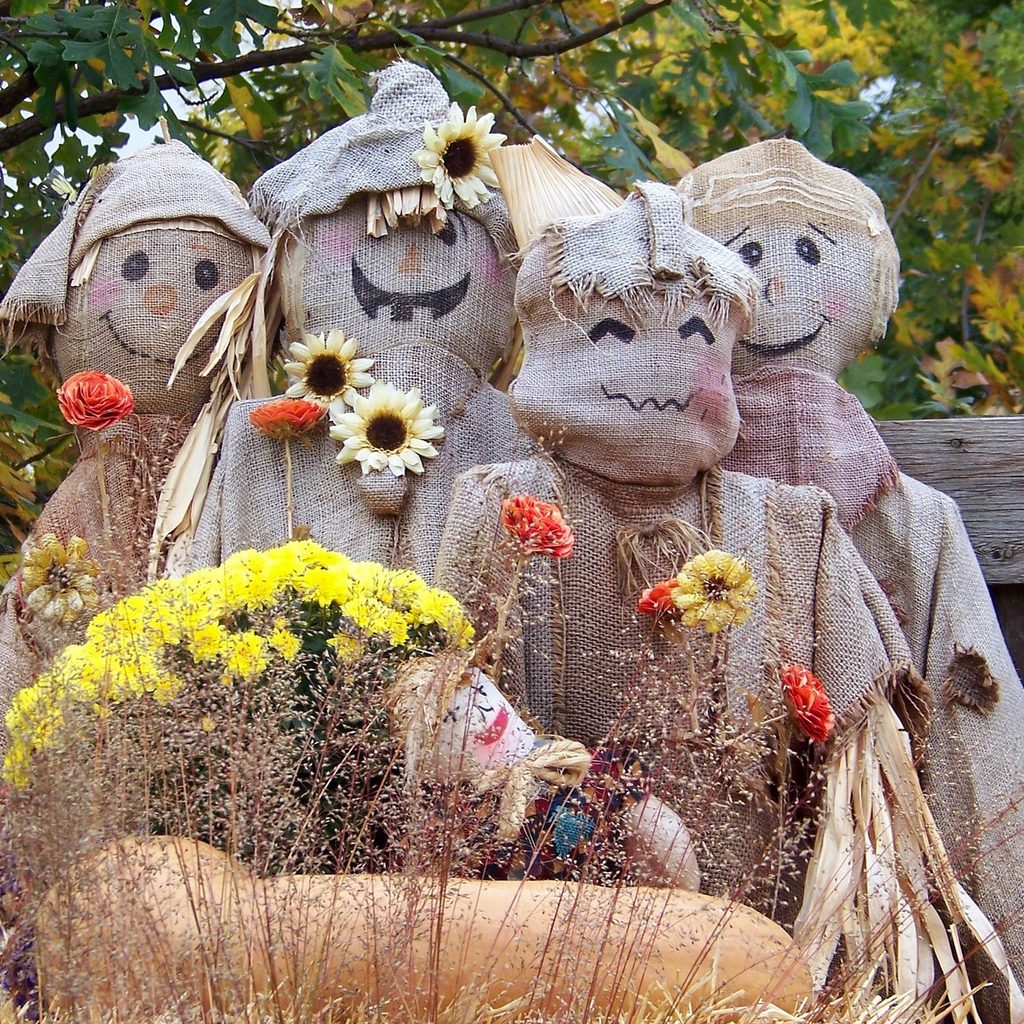
Craft a scarecrow to keep your fall veggies safe
As the weather cools and animals begin stocking up for the winter, your vegetable garden could become a feast for all sorts of critters. You can keep some of them at bay with a homemade scarecrow. All you need is fabric for the body, something to stuff it with, twine to hold it all together, and a post or posts to mount it on.
For a traditional human-shaped scarecrow, you can use a set of old clothes for the body, sticks for the arms, and a gourd or bag for the head. Straw, hay, or leaves are great choices for stuffing, since they won’t harm the environment if they fall out. This is the perfect project to flex your creative skills. Why not make the scarecrow look like your favorite fictional character, or eschew tradition entirely and create a monster-shaped scarecrow?
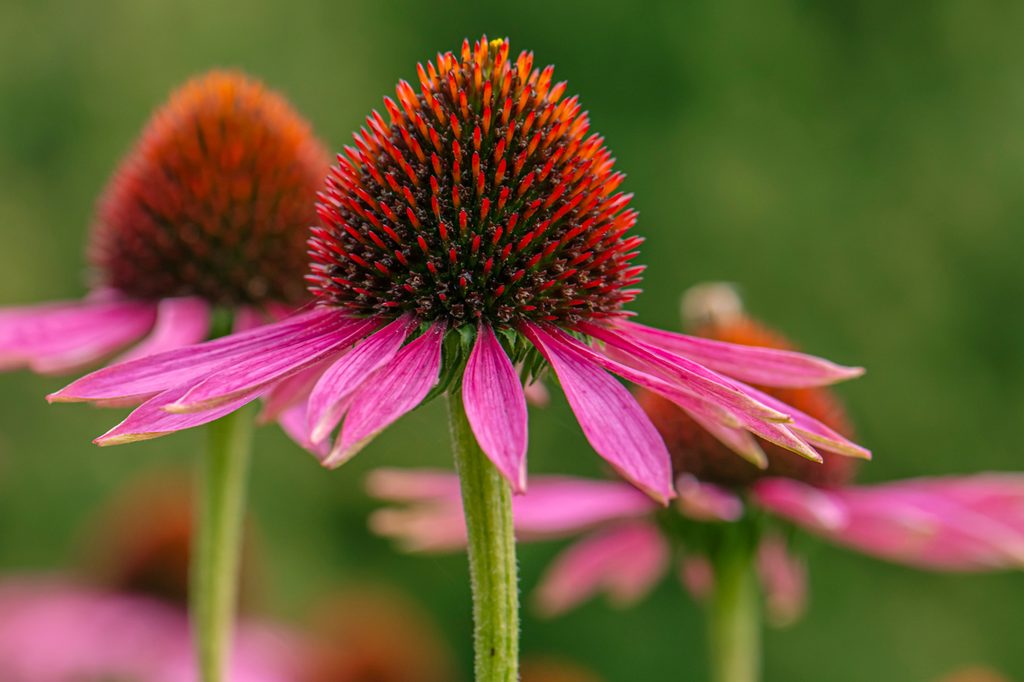
Divide and replant your spring-blooming perennials
Your spring and summer blooming perennials will be closing up the last of their flowers and starting to go dormant in October to prepare for the cold weather, but you aren’t quite done with their care yet! Mature perennials can be divided, splitting a single plant into two or more smaller plants. This is great for your garden, since you’ll have more plants to plant, but it also helps your perennials thrive. It cuts down on crowding and encourages your plants to continue growing. If you don’t want multiple clumps of the same plant, you can pot the extras and give them as gifts.
You should divide plants when they’re not in bloom to avoid causing them extra stress, so only divide spring or summer blooming perennials in October. Leave your fall-blooming perennials until spring. To divide your plants, dig them up gently or remove them from their pots. Brush as much dirt as possible off of the roots, so you can see them clearly. Most plants can be separated by gentle but firm pulling, but some gardeners have an easier time cutting them apart. Each section should have at least three stems and a clump of attached roots. Repot the sections and you’re all set!
There are a lot of things you can do in October, but these six projects are simple, helpful, and fun. Once you’ve tried them out, they’re sure to become part of your yearly October routine. Although fall is marked by plants slowing their growth and going into dormancy, there are still plenty of gardening projects to help your yard and garden thrive.


